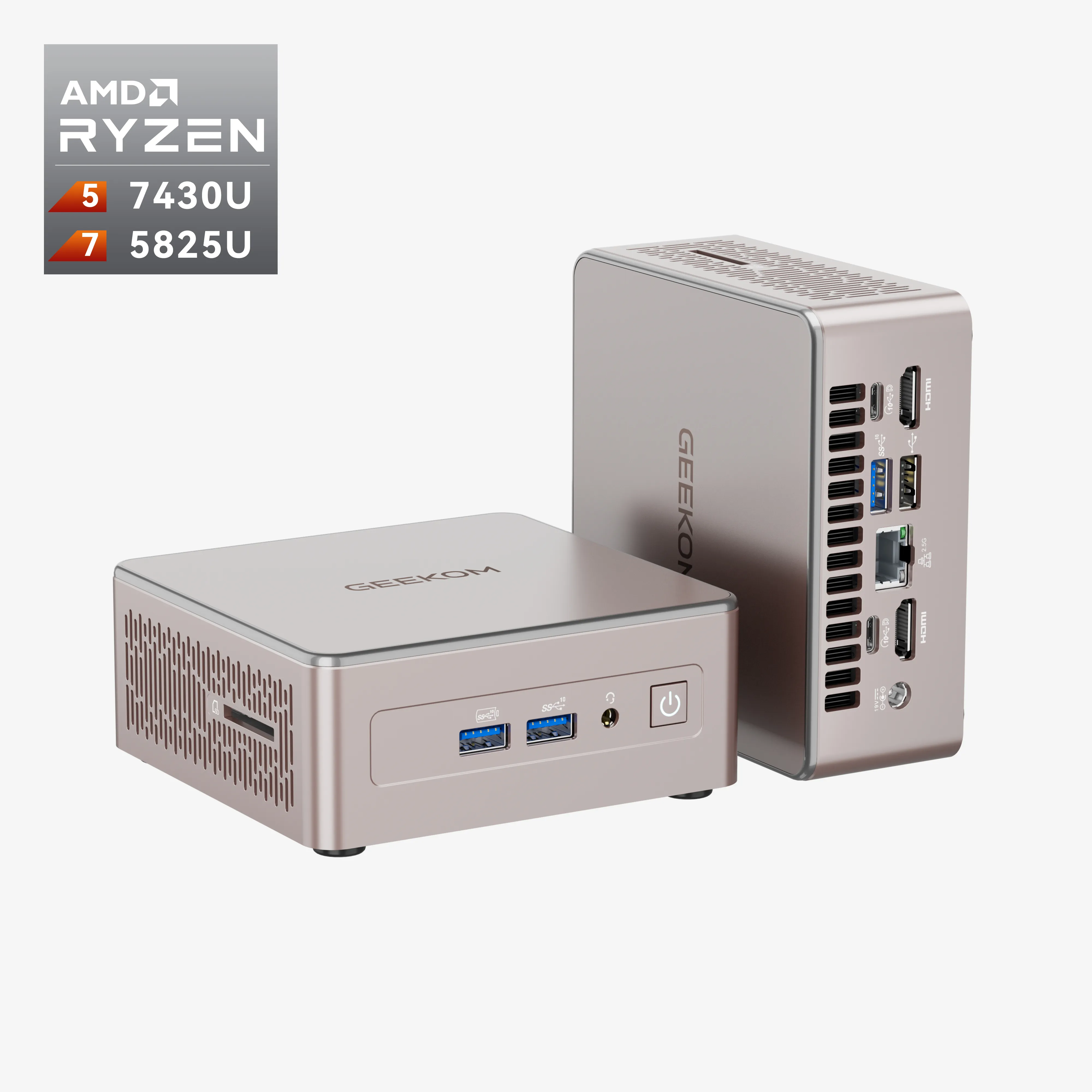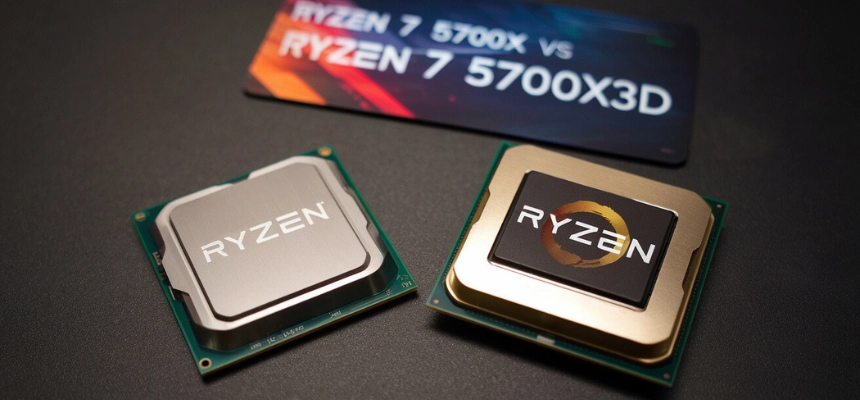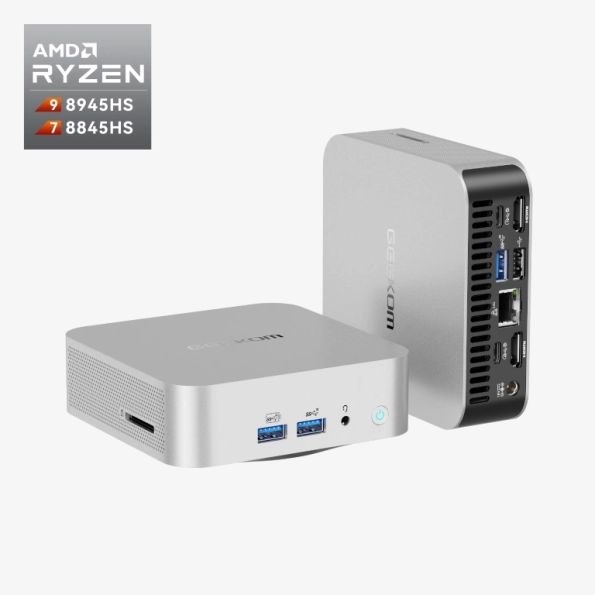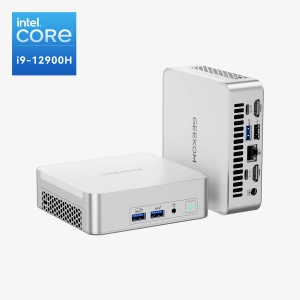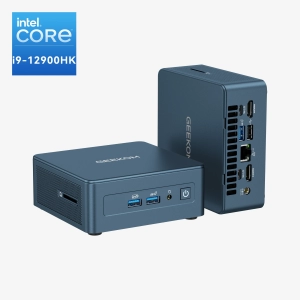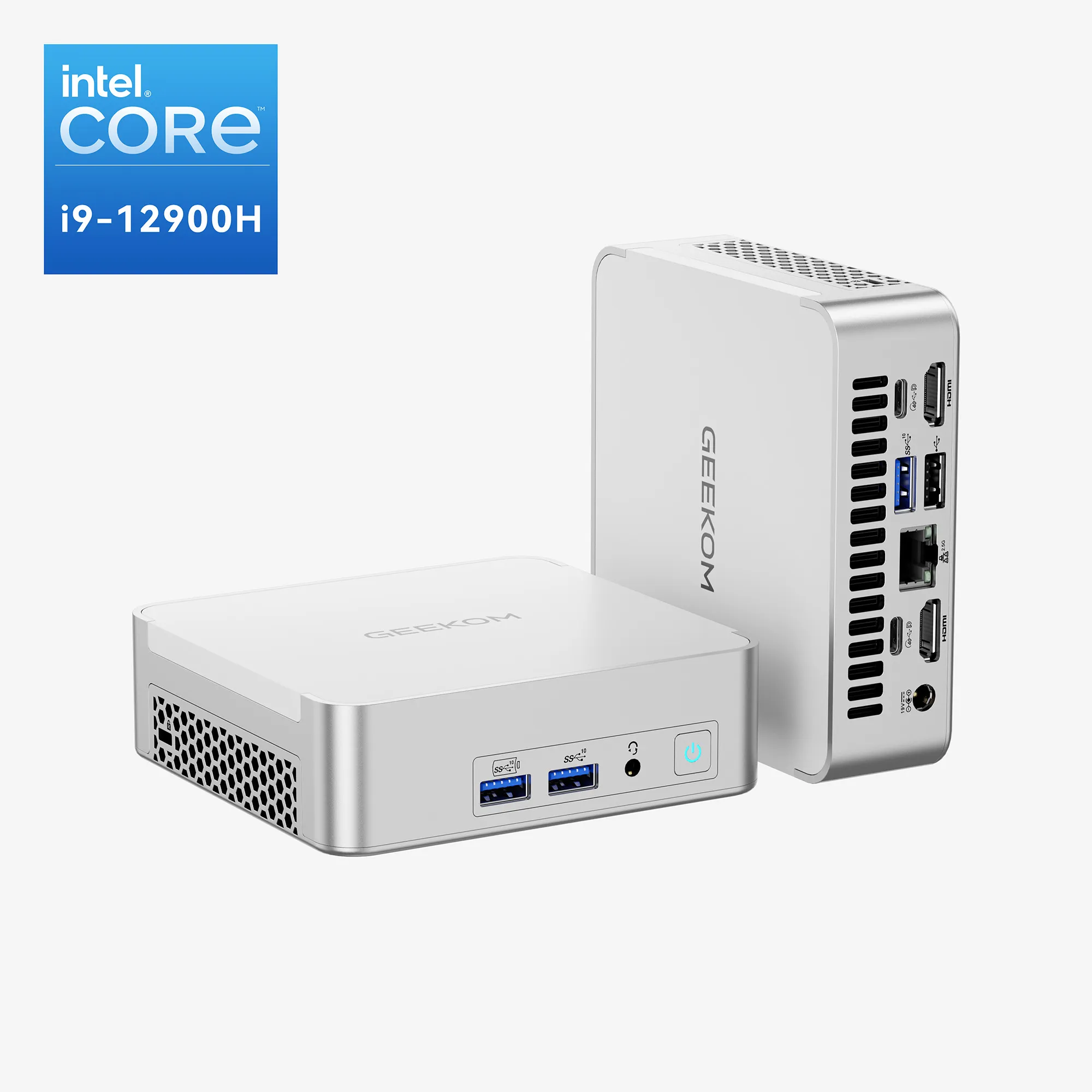Introduction
The choice of CPU affects software compatibility with other hardware, processing speed, multitasking, and energy consumption. AMD has been a pioneer in the world of CPU technology, especially with its series of Ryzen 7 processors, which have received numerous praises for their excellent performance-to-affordability ratio.
Among the two models, the Ryzen 7 5700X and the Ryzen 7 5700X3D highlight the line, each catering to somewhat different needs of the consumer. The Ryzen 7 5700X stands tall as an option with one of the finest performances running across applications for the average consumer and power consumers. On the other hand, the 3D V-Cache implemented on the fly for the Ryzen 7 5700X3D produces increased sizes of cache through which processing speeds boost dramatically, not only in gaming but also on heavy computational tasks. The goal of this article is to narrow down a detailed comparison between these processors by extending the values of options into each case for potential customers depending upon their own computing requirements and expectations.
Architecture and Technology of AMD Ryzen
Both AMD Ryzen 7 5700X and Ryzen 7 5700X3D are built on the Zen 3 architecture, which reflects a great progression in power efficiency, processing performance, and management techniques when compared to predecessors. This architecture is based on a 7 nm production process that enables denser, swift, and power-efficient microprocessors. The Zen 3 architecture has also a redesigned core layout and improved direct access between CPU cores and cache, thereby reducing latency for overall processing speeds.
One remarkable feature of Zen 3 is the 3D V-Cache integrated into the Ryzen 7 5700X3D. This technology employs an additional layer of L3 cache piled directly over the chip, resulting in a gigantic increase in cache available to CPU cores. With a whopping total of 96 MB of L3 cache against 32 MB for the standard Ryzen 7 5700X, this exceptional increase in cache means much faster access to data, which boosts performance significantly for cache-hungry tasks, gaming, and intricate scientific computing.
3D V-Cache, used in the Ryzen 7 5700X3D, is a perfect case in point of how AMD employs architectural advances to heighten CPU performance. With this technology, there is not only an increase in the processing speed of tasks but also an improvement in system efficiency by reducing access to slower external memory fetching. Consequently, applications become more responsive and efficient in handling both everyday workloads and compute-intensive ones.
5700X vs 5700X3D Specification Comparison
Here is a detailed comparison of the specifications between the AMD Ryzen 7 5700X and the Ryzen 7 5700X3D:
| Specification | Ryzen 7 5700X | Ryzen 7 5700X3D |
| Core Count | 8 | 8 |
| Thread Count | 16 | 16 |
| Base Clock | 3.4 GHz | 3.0 GHz |
| Boost Clock | Up to 4.6 GHz | Up to 4.1 GHz |
| Total L3 Cache | 32 MB | 96 MB |
| TDP | 65 Watts | 105 Watts |
| Supported Memory | DDR4-3200 | DDR4-3200 |
Although the two CPUs share many characteristics, such as the number of cores and threads, the base and boost clock rates, and the types of supported RAM; they still guarantee a good level of performance across numerous applications. However, the drastic increase from a 32 MB L3 cache on the 5700X to a 96 MB cache on the 5700X3D greatly enhances the latter’s ability to crunch larger data and lessens the latency attached to that access for frequently used data. This is a big-win trade-off for environments that suffer heavily from cache availability, such as high-resolution gaming and professional-level rendering or data processing-oriented tasks.
The raising of the Ryzen 7 5700X3D TDP to 105 W, from 65 W on 5700X, is another reflection of its higher power consumption, which can mainly be attributed to the introduction of the extra cache layer. This indicates that the 5700X3D should be decision-making at best in cache-hungry workloads-it needs cooling that is simply stronger and then on balance further restricts the system’s power efficiency.
Practically, the increased cache size within the CPU translates into the ability to take forward many different kinds of computational tasks with great efficiency. For example, in gaming, the design of a particular gameplay that is cache-obedient will see improvement in frame rates and minimize load times, when entering into massive open-world sites. Similar considerations apply to scenarios whereby professional software comes into play, like video editing and 3D Modeling programs wherein the increase in cache aids performance across progressively more taxing tasks. In a nutshell, the Ryzen 7 5700X3D seems to be cutting out right for the professional along with gamers who crave unparalleled speed from their systems.
Performance Comparison
Benchmark Scores
| Benchmark Type | Ryzen 7 5700X Score | Ryzen 7 5700X3D Score |
| Cinebench R23 Single | 1512 | 1510 |
| Cinebench R23 Multi | 12240 | 12300 |
| PassMark Single Thread | 3540 | 3525 |
| PassMark Multi Thread | 23800 | 24000 |
Gaming Performance (FPS)
Tested at various resolutions with high graphical settings using an NVIDIA GeForce RTX 3060 Ti:
| Game | Resolution | Ryzen 7 5700X FPS | Ryzen 7 5700X3D FPS |
| Cyberpunk 2077 | 1080p | 85 | 92 |
| The Witcher 3 | 1440p | 120 | 130 |
| Fortnite | 1080p | 144 | 152 |
Single-Thread Performance
The single-threaded performance of both the Ryzen 7 5700X and the Ryzen 7 5700X3D, as evidenced by the Cinebench R23 and PassMark scores, is very close. This fact means that in tasks involving a single core’s power, such as the bulk of older games or typical applications not effectively utilizing many cores, both CPUs are going to offer similar performance.
Multi-Thread Performance
In multi-thread benchmarks, Ryzen 7 5700X3D dominates over Ryzen 7 5700X, as indicated by the scores in both Cinebench R23 Multi & PassMark Multi Thread. However, although mild, this delta reinforces the argument AMD has constructed that the Ryzen 7 5700X3D would outperform the Ryzen 7 5700X in multi-core demanding tasks due to its added cache: keeping throughput up while load increases.
Productivity Tasks
In productivity applications like Adobe Premiere, Photoshop, and Microsoft Office, the Ryzen 7 5700X3D’s cache is helpful. For example, with rendering video in Adobe Premiere, the Ryzen 7 5700X3D has the added pinch of being able to render bigger frames or more complex sequences, thus decreasing render time and increasing overall workflow. Likewise, in Photoshop, certain functions depend heavily on large files or complex filters for which the cache increase will be a significant plus.
Gaming Performance
The gaming performance data support the greater cache of Ryzen 7 5700X3D in graphically intensive and massively open-world games like Cyberpunk 2077 and The Witcher 3. The larger cache permits better frame rates on higher resolutions, thus further improving the smoothness of gameplay while at the same time lowering latency and load times. Such boasts will mean that the Ryzen 7 5700X3D is a more favourable choice for enthusiasts desperate for maximum performance in the very latest, demanding game titles.
Power Consumption and Thermal Management
Power Consumption
Despite having a few similarities, one main distinguishing parameter is their power consumption in favour of the additional cache and somewhat better performance of the 5700X3D. The 5700X, TDP 65 W, has been built for energy-efficient users who want to achieve good performance with lower power consumption. Yet it is not in the position to beat the Ryzen 7 5700X3D, with a TDP of 105 W, which it needs because of even more cache and higher performance demands. Under gaming pressure or video rendering, the Ryzen 7 5700X3D consumes rather more power and incurs higher electricity bills but gives a boost in performance.
Thermal Performance
Thermal management is vital to CPU longevity and stability. With a lower TDP, the Ryzen 7 5700X generally produces less heat and is thus easier to cool in most cases. However, the Ryzen 7 5700X3D, with its higher TDP and extra cache, puts out more heat during long, intense workloads. Thus, better cooling solutions will be needed to avoid thermal throttling and ensure that performance stays consistent. Both CPUs have cooling capabilities to cool efficiently but depend on the 5700X3D needing more attention due to more heat to ensure optimal performance.
Cooling Solutions
A great air cooler like the Noctua NH-U12S is generally all you need for the 5700X. For the 5700X3D, an AIO-GPU cooler like the Corsair H100i is more advisable due to the higher output, while ensuring it maintains a suitable temperature to enhance CPU performance and longevity.
Assembly Recommendations
Excellent stability and feature sets that enable the leverage of CPU capabilities make motherboards like the ASUS ROG X570 Crosshair VIII and the MSI B550 Tomahawk some good choices for both Ryzen 7 5700X and Ryzen 7 5700X3D. For RAM, high-speed modules such as Corsair Vengeance LPX 3200MHz or G.Skill Trident Z Neo 3600MHz would assure optimal operation. Cooling systems should be selected according to CPU: a Noctua NH-U12S PWM air cooler would more than suffice for the 5700X, while a Corsair H100i would be more appropriate for the other due to its additional thermal output.
5700X vs 5700X3D Buying Guide
When to Choose Ryzen 7 5700X:
Ryzen 7 5700X is very handy for these users perfect way for basic computing, moderate gaming load, and the most versatile content creators. It strikes the right balance between power and efficiency without any unnecessary expenses that come with technologies such as an enhanced cache size. It is indeed feasible for all those professionals and enthusiasts who require a competent processor without feeling the burn against their wallets.
When to Choose Ryzen 7 5700X3D:
Ryzen 7 5700X3D caters to all users who are looking for high performance, mainly for gaming and thus, larger cache computations. This CPU is best for gaming requires as high FPS as possible and minimizes loading times for graphics-intense games. It is also the one for professionals in the fields of video editing, 3D modelling, and data analysis, where increased cache dramatically improves processing times. It aims at the new generation who focus on outstanding performance and seem to find a few extra bucks to fit their machine in.
Recommended Products
In the desktop world, 5700 and 5700x3d are both good choices, but in the world of mini pc, if you need to choose a mini computer with Ryzen 7 or Ryzen 9 CPU, GEEKOM will be your best choice:
★★★★★ ( 4.9 Based on 42 reviews)
- AMD Ryzen™ 9 8945HS or Ryzen™ 7 8845HS.
- AMD Radeon™ 780M graphics card.
- Dual-channel DDR5 5600MT/s, up to 64 GB.
- M.2 2280 PCIe Gen 4 x 4 SSD, up to 2TB.
- Wi-Fi 6E and Bluetooth® 5.2.
Conclusion
The present article has taken much detail in reviewing the specifications, performance, and scenarios for the use of the AMD Ryzen 7 5700X and 5700X3D. While both CPUs share the same basic Zen 3 architecture, they are intended for different users due to AMD Ryzen 7 5700X3D, benefitting from a more advanced 3D V-Cache that enhances its performance by several folds on cache-sensitive workloads, such as high-end gaming and professional applications involving heavy data manipulation, against the well-rounded Ryzen 7 5700X, which is ideal for several day-to-day computing tasks.
If users are looking for power but want to keep it within value standards in keeping with these, the Ryzen 7 5700X is just the deal. It provides ample juice for most applications without the cost of newer generations of features. Alternatively, for those working ideally at performing tasks where quick access to data and processing is of salient importance, the Ryzen 7 5700X3D will be perfect.
Looking towards the future, further advancement in CPU technology ahead of graphics, AI-based performance optimization, and additional cache technology developments will all shape user choices. With increasingly potent CPUs, the end-user will have to check how these advancements fit into their computing needs and budgets. Going forward, the selection process for processors will increasingly entail weighing a combination of present performance metrics against potential future gains; after all, people wish to be confident that the investments they make today still enhance their businesses in the future in the face of rapid changes.









